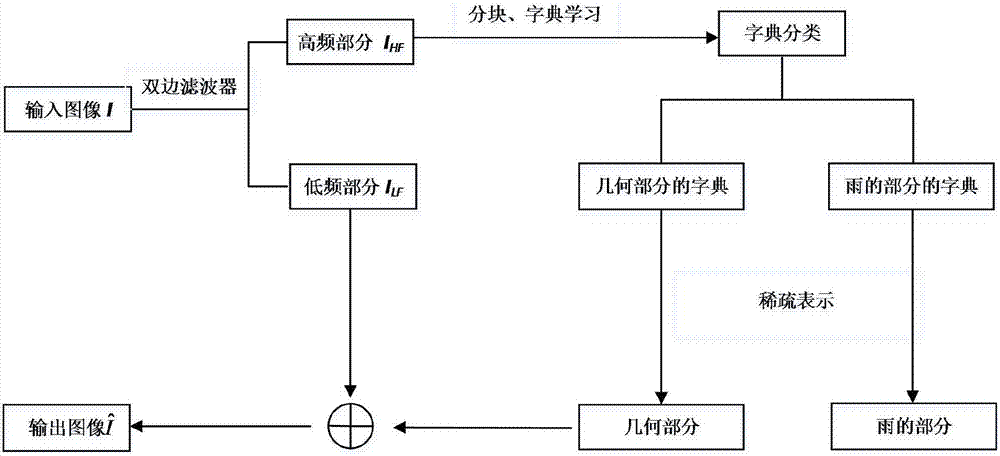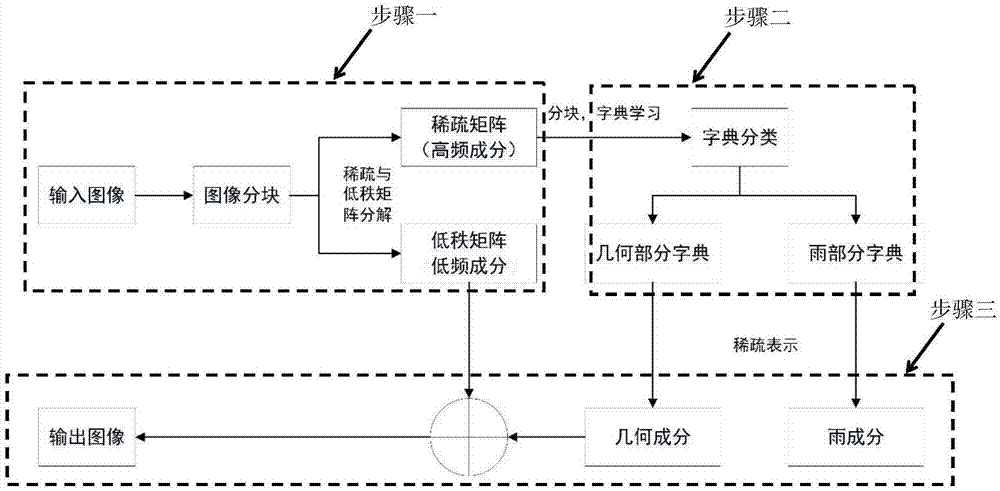De-raining method of single image based on sparse and low-rank matrix decomposition
A low-rank matrix and single image technology, applied in the field of computer vision, can solve the problems of being unable to adjust, rain removal effect depends on dictionary classification, and poor adaptability, etc., to achieve good detail information, automatic processing, and good scalability Effect
- Summary
- Abstract
- Description
- Claims
- Application Information
AI Technical Summary
Problems solved by technology
Method used
Image
Examples
Embodiment
[0027] figure 2 It is a flowchart of a method for removing rain from a single image based on sparse and low-rank matrix decomposition in an embodiment of the present invention.
[0028] Such as figure 2 As shown, a single image deraining method based on sparse and low-rank matrix decomposition has the following steps:
[0029] Step 1: given the input rain image I, first decompose the rain image into 8×8 image blocks, for any image block, take the center of the image block as the origin, and 4 pixel offset The 8 small image blocks together form the input matrix, and perform sparse and low-rank matrix decomposition on the input matrix, and then the corresponding part of each original small block in the low-rank matrix is equivalent to the low-frequency component, and the corresponding part in the sparse matrix is equivalent to For high-frequency components, go to step 2.
[0030] The main purpose of sparse and low-rank matrix factorization is to decompose a given target...
PUM
 Login to View More
Login to View More Abstract
Description
Claims
Application Information
 Login to View More
Login to View More - R&D
- Intellectual Property
- Life Sciences
- Materials
- Tech Scout
- Unparalleled Data Quality
- Higher Quality Content
- 60% Fewer Hallucinations
Browse by: Latest US Patents, China's latest patents, Technical Efficacy Thesaurus, Application Domain, Technology Topic, Popular Technical Reports.
© 2025 PatSnap. All rights reserved.Legal|Privacy policy|Modern Slavery Act Transparency Statement|Sitemap|About US| Contact US: help@patsnap.com



